![]()
News release from the City of Fort Wayne:
Measurement built in to every facet of New City-County Land-Use Permitting Plan
Real-time Data Tracking Key Part of Development Process Streamlining
Amplifying the work of the City-County permitting task force, Fort Wayne Deputy Mayor Beth Malloy today detailed the metrics that have been integrated throughout the new Fort Wayne-Allen County land-use permitting plan. The legislation will be the topic of a joint meeting of the Fort Wayne City and Allen County councils on May 31.
From its inception, capacity to gauge the effectiveness of the new permitting program has been incorporated into every aspect of it. The multifaceted approach will streamline the land-use permitting process for large-scale developments and projects. In advance of both councils’ action and as regularly done on significant legislation, briefings on the entire plan have been offered to elected officials.
“Benchmarks and measurements of success have been a vital component of the permitting improvement process,” said Deputy Mayor Malloy. “They’ve been part of the discussion since day one.”
“Last winter, the task force worked to establish metrics for customer satisfaction, so I know firsthand that benchmarks have always been an integral part of the permitting improvements,” said Bruce Watson, Facilities Manager of Fort Wayne Metals and task force contributor. “Making it easier for companies to do business in Allen County is essential to our growth. I appreciate the efforts that the City and County are making to cut red tape.”
Working together over the past year, the task force, composed of County and City officials with input from approximately 75 local business leaders, outlined the following standards for measurement:
[list type=”black”]
[li]Permit-issuance lifecycle enhancements. To increase the speed for issuing permits, baseline data on the existing system will be created by capturing start-to-finish tracking times on the permit-process lifecycle. Based upon this information, areas of improvement will be delineated by a team of City, County and business leaders. Firm goals will then be defined to shorten the number of days required to get a permit. The goals will be coordinated with an implementation schedule to effect the changes as rapidly as possible. Results of this process will be posted on the new digital City-County Development Portal.[/li]
[li]Metrics-based satisfaction index. Over the past year, the task force has surveyed many local businesses. The results of the survey were used to establish benchmarks for improvement. Going forward, every business that requests a permit from the City or County will be invited to participate in the customer satisfaction survey. The task force will review all suggestions, spell out areas to be addressed and set a timeline for advancing customer satisfaction. The results of this opinion research, and the timely implementation of identified recommendations, will be published and can be followed online.[/li]
[li]Metrics-based software improvements. The new permitting software will provide an easily accessible view of the status of each permit application, giving immediacy to the process and real-time progress reports for City and County staff, as well as for those in the development community. The internal metrics of the system will also afford a comprehensive perspective of the permitting process, something currently unavailable, and ensure continuous process improvements.[/li]
[/list]Additionally, the new position of Chief Development Expeditor, assigned to the largest and most complex projects; and an internal City-County team to facilitate midrange initiatives, will guarantee development professionals direct points of contact and consistent support assuring the highest levels of customer service.
The permitting modifications are targeted toward projects that represent large investments or a high-level of complexity. Based upon numbers spanning 2008 through 2010, the new plan will affect about 8 percent of all permits issued, accounting for almost $300 million of annual investment or approximately 65 percent of local, yearly development spending.
The land-use permitting plan’s objectives are to simplify and speed up processes, jumpstart the use of technology, accelerate approvals, provide hands-on support and quicker answers, and clarify and align the complicated rules and regulations governing both jurisdictions.
The permitting plan is the next major step in the City’s and County’s unified, aggressive efforts over recent years to make government more efficient and the community more business friendly. A long list of accomplishments have set the stage for this element, beginning with Plan-it Allen, the Fort Wayne-Allen County Comprehensive Land Use and Development Plan; the merger of the City and County land-use planning departments; and the co-location initiative that is bringing nearly all local government together physically, with all development-related functions headquartered conveniently in Citizens Square.
The plan is the product of a year of concentrated work by the City-County permitting task force, a bipartisan group of public officials that also drew extensively upon the expertise and ongoing involvement of numerous members of the local business community. Regular meetings with business owners, developers, builders and architects have been part of the effort and will continue.
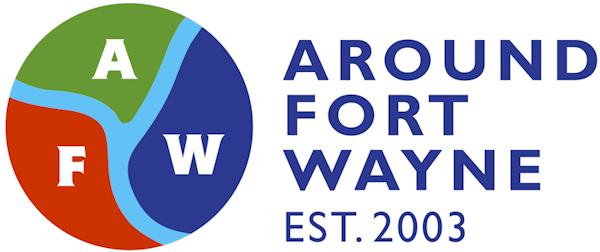
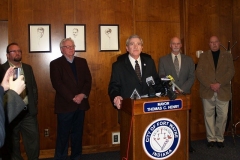
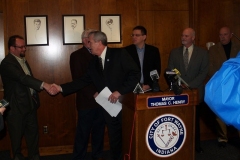
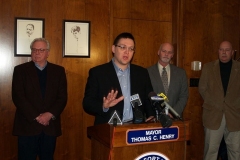


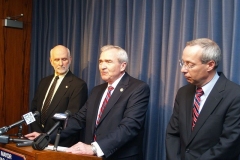
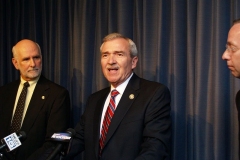


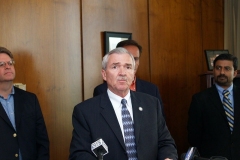


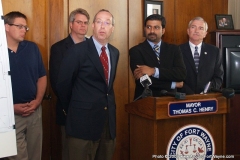
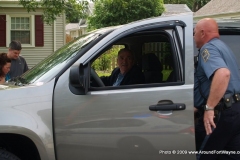

1) Will something in the planned system provide the metrics on how effective the spending of $1.4 million will be?
2) How will the new Chief Development Expeditor (and his/her Indians – if a Chief there has to be Indians!)be paid after the initial 21 month cycle covered by the $1.4 million?
3) Ditto on the new Project Manager Tzar? And will this be the same P.M. we had for the unnecessary new baseball stadium since he now has his hands out of the public till?